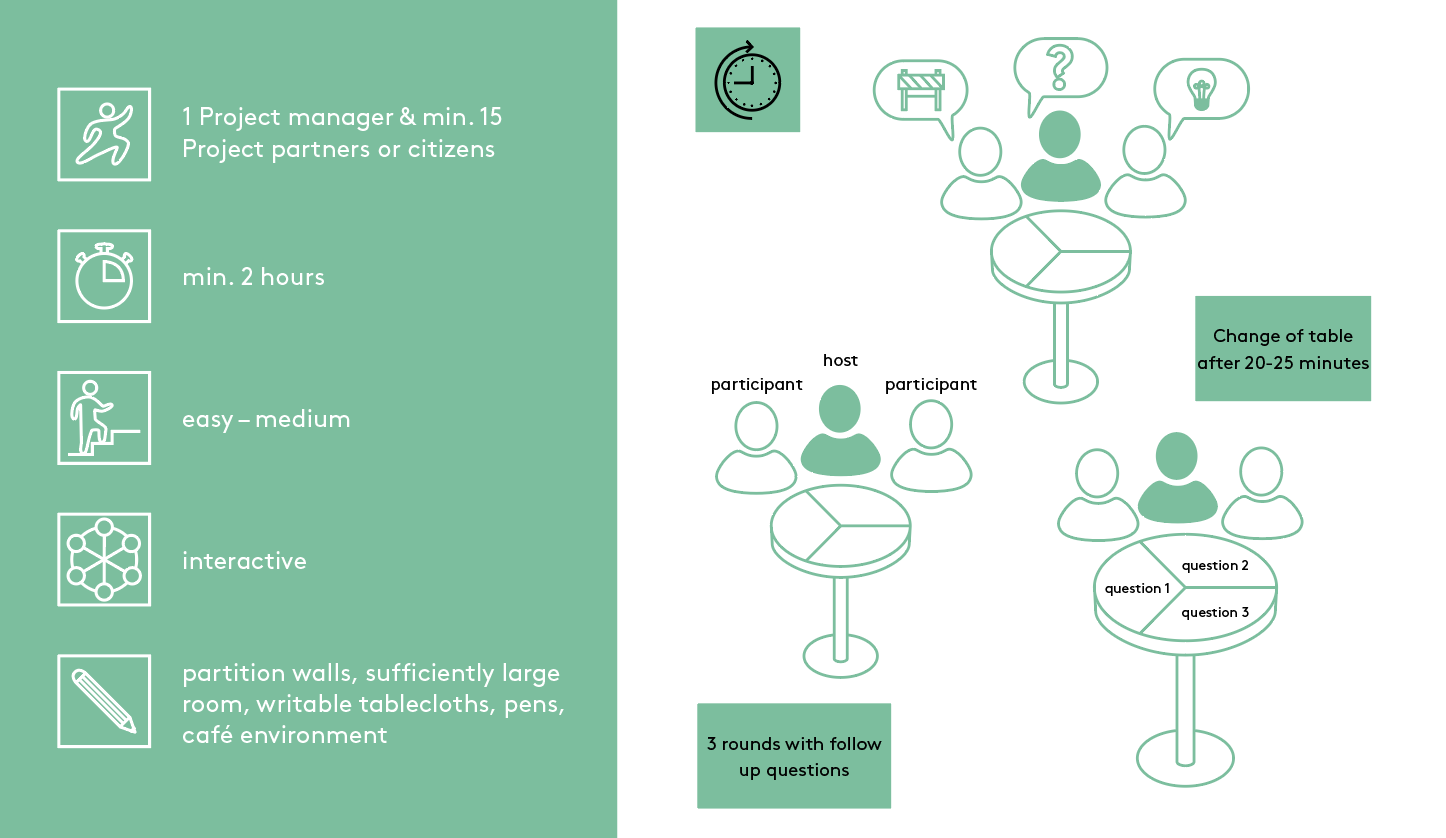
Step-by-Step
1. First, create a pleasant atmosphere for the participants (e.g. with coffee and cookies) and cover each table (ideally a round one) with a tablecloth that can be written on (prepare this beforehand out of paper tablecloths or wallpaper remnants).
2. Assign participants to small groups (3-5 people) to sit together at a table. Each table can discuss a different theme, e.g. health, education, mobility.
3. In the small groups, the participants discuss the corresponding topic along a predefined question (+/- 20 minutes). The main points of the discussion should be recorded directly in writing or graphically on the tablecloth. There are several rounds of discussion, usually according to the number of different questions, e.g.: What are the problems? What ideas are in the room? Which stakeholders are involved?
4. After each round, participants move to any other table. A previously selected participant remains at the table as "host" to briefly summarize the previous discussions to the new participants.
5. In the second round of discussion, the recorded points of the previous discussion should be used to link them to the new round of discussion. There is also the possibility to collect completely new ideas. This process is repeated until each participant has visited all tables or the last question for discussion has been asked.
6. After the last round, the results and findings are presented to all participants by the hosts of the tables, who are the only ones who have followed all the discussions on the respective topic.
More about the tool
Testimonial



